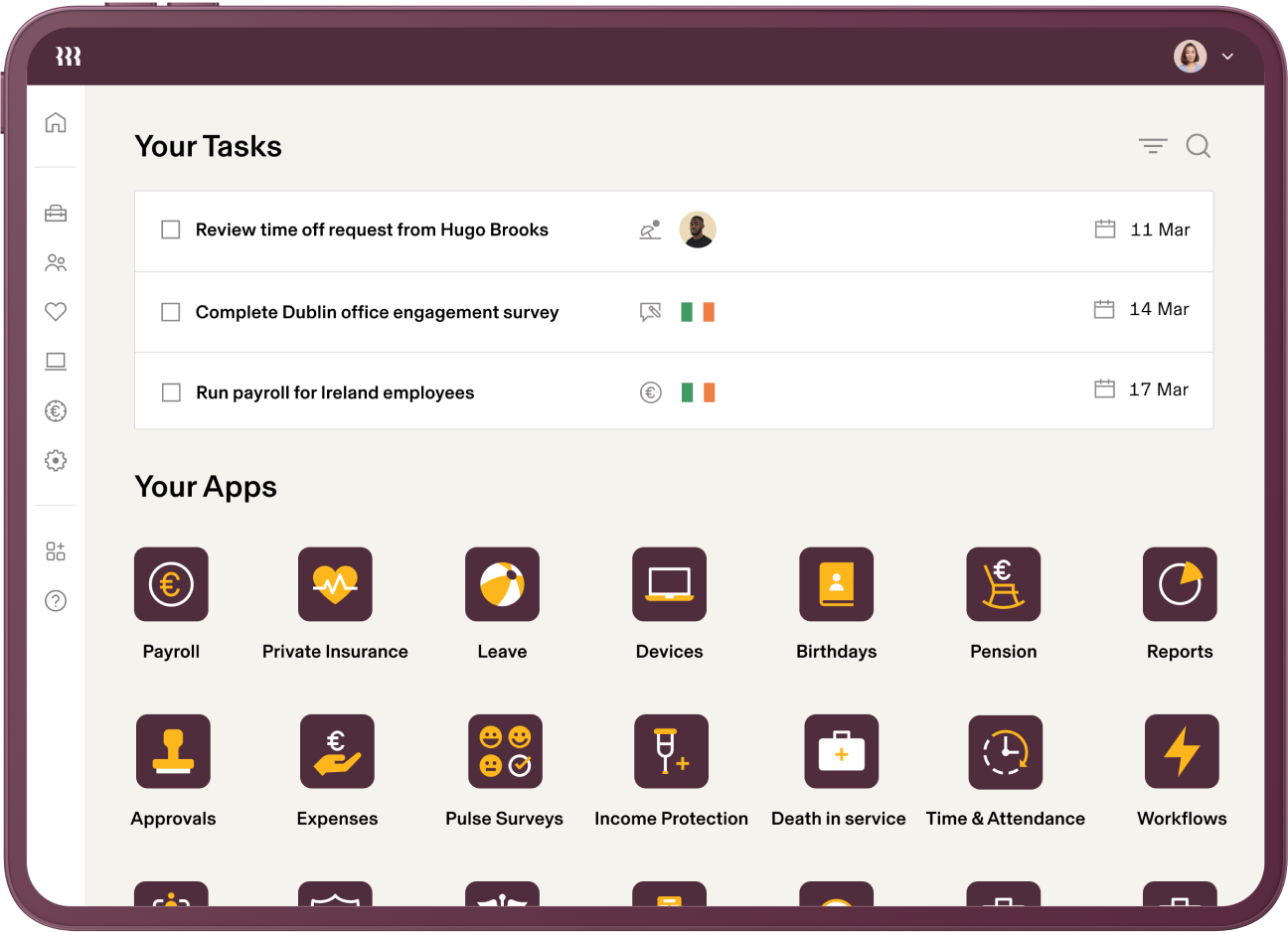At the moment, employees and employers are witnessing a persistent increase in the expectations of the workforce. From training on how to use particular software programs to learning about new management skills – all workers are expected to evolve in their roles in response to new demands. Organizations require workers that are capable of responding to this continuous demand for learning new skills, whilst also performing their typical duties.
In this way, through establishing a learning and development (L&D) plan, this provides employees with greater clarity regarding what their employer expects of them. It also provides an opportunity for employees to develop their own personal skills. With proper execution, the implementation of an L&D plan can contribute to producing not just better-informed workers but an even more engaged workforce. Through executing a plan that considers the desires of all involved, this offers organizations the opportunity to get the most out of every team member.
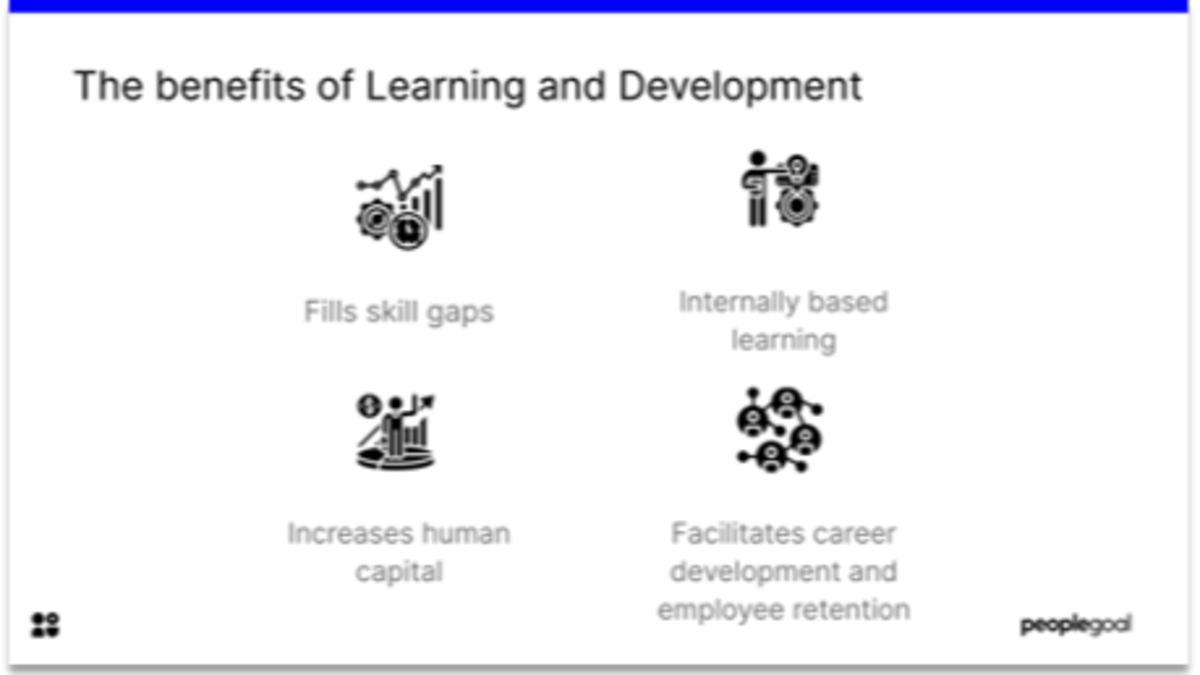
Aren’t Learning and Development the same?
Use of the terms learning and development are often seen as interchangeable options for the same meaning, however, this is not necessarily the case. It is important to understand the difference between the two terms before jumping into creating a plan for learning and development. A better understanding of the two terms will stand you in better stead for when the time comes to enact a learning and development plan for your team.
What is Learning?
Learning is an experience. Everything else is just information. – Albert Einstein
Learning can be defined as the acquisition of knowledge or skills through study, experience or being taught. In essence, it is an activity of obtaining a new understanding of how to engage with the environment around us. For employees, this means harnessing a stronger, or more efficient, approach to the tasks and requirements of their roles. Various learning methods can be introduced, each employee will respond differently.
What is Development?
Development is a process that enables growth, progress or positive change. It represents an event that constitutes a new stage in a changing environment. In the world of work, this utilizes the application of learning for the purpose of improving the quality of an employee’s or organization’s output. Development is dependent on learning in order to achieve progression.
It is apparent that as much as the two terms refer to similar aspects of acquisition and change, there is a clear difference between them. It is important to learn so that one can develop. The application of new knowledge is what enables growth, in the workplace, this couldn’t be more true. Through learning and development, an organization is able to overcome whatever skill gaps are lacking from their workforce. This could be leadership development or a whole host of other learning activities, the options are almost limitless.
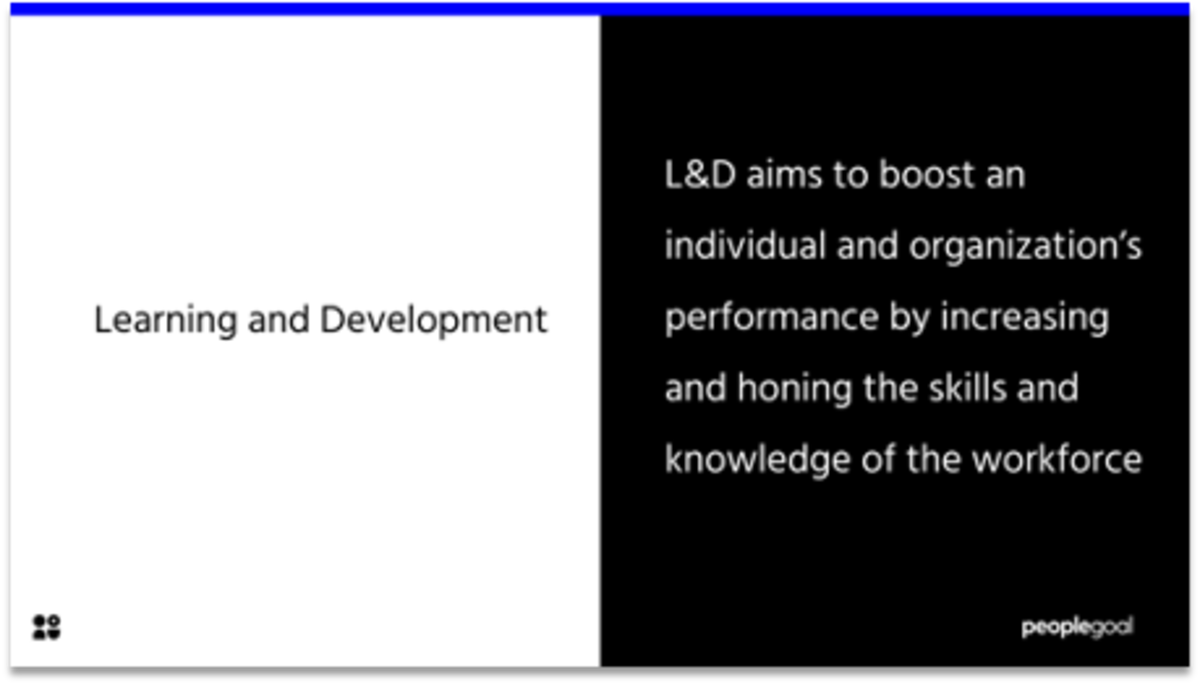
Why is a Learning and Development plan important?
Companies that invest in the skills of their employees will see positive returns from their training activities. After all, the purpose of overseeing the development of employees is to enable them to grow as individuals, whilst also advancing the company’s human capital. Development programs are specifically curated to enable employees to grow and learn more about the skills required in their role.
The significance of an L&D plan is demonstrated by its capacity to clearly illustrate the purpose and outcomes of the training. A clear plan provides employees with a better understanding of what they need to be doing and by when. Moreover, it enables them to see how the training will facilitate their individual career development.
For any organization, proper planning and communication regarding the learning outcomes of employee training will assist them to identify key roles and the growth of talent. Companies often implement training programs, or online courses, with the intention to fill skill gaps that may exist throughout their workforce. Through delegating the relevant training to employees, this is mutually beneficial for both the employee and organization in achieving their common goals.
Kicking off your Learning and Development plan
There are 5 key steps to executing a successful L&D plan. By ensuring that you have followed these steps when getting started with your own plan, you will be able to avoid making the typical mistakes that can lead to unfruitful outcomes. There is no point in undertaking a plan without a clear direction or desired outcomes, it is important for all involved to understand what and where the plan is leading towards.
Poorly executed L&D programs with little planning can lead to external business performance issues such as decreased customer satisfaction. As a result, talent development must prepare properly for such training and development.
When you have a defined target, it is far easier to aim at it. Evidently, the significance of a plan is its capacity to inspire a team to strive for the fulfillment of it. Beyond motivating those who must execute the plan, the benefit of a structured plan is that it can allow an organization to better predict and understand how they will meet their requirements and desired outcomes. Without further ado, let’s get into the 5 key steps for kicking off your learning and development plan:
1. Align with your business strategy
This might seem like an obvious first step but it can often be overlooked by organizations, which can lead to issues further down the line. The purpose of a learning strategy is to support professional development and strengthen capabilities across an organization. This strategy is shaped by the company’s business and talent strategies – through L&D, an organization should be more capable of realizing such strategies.
A learning and development plan must align with an organization’s overall priorities. It might seem obvious but ensuring that employees are learning the relevant skills to achieve predetermined business goals, will be the most reliable method of meeting these aims. Without ensuring that the learning and development outcomes align with your business strategy, you run the risk of wasting time, effort and money on training that has no connection to your company’s objectives.
By determining what your business goals are, then illuminates what skills, knowledge and competencies are required to support these goals. Consideration of your long and short-term business objectives will allow you to better prepare and cater to your specific needs. Creating a career path and demonstrating advancement and promotion opportunities through development can help in retaining top talent.
2. Talk to your employees
Communication is key to realizing a genuinely beneficial L&D strategy. You can’t assume that you know your employee’s skill level and career aspirations. It is important to open a conversation with each team member and to attain a better understanding of what their career goals are. Ask them to consider both their strengths and weaknesses, along with areas that they wish to improve in. By determining whether they would like to conduct additional training, you can help employees aspire to grow beyond their current capabilities.
Whilst some employees might already have considered where they wish to improve, for others this might not have been something that they had even yet thought about. Through discussing with employees about their development, may encourage them to engage more with their career progression.
Establish if the introduction of learning officers would be beneficial, take some time to understand what is really going to help your employees get the most from training programs and learning activities. If learning management systems would be useful, then take some time to research the best-rated LMS available in your budget. Some of these systems use real-time notifications on mobile devices to prompt employees more regularly on their learning.
Even employees that already have development goals, might not know how to get started. It is the responsibility of the company to demonstrate its commitment to support its employees in learning and developing the necessary skills to grow and prosper long-term. The significance of opening the conversation to your employees is the opportunity it presents to determining how you can mutually benefit from each other.

3. Establish capability gaps and readiness
Now that you’ve identified the priorities of your business and employees, it is important to determine if employees can deliver on them. Without considering how prepared individuals are to take on their intended training, you cannot guarantee that their learning will be well received. In order to ensure that the learning and development plan will come off effectively, it is necessary to assess the readiness of employees.
Readiness comes in many forms, including desire, skills and experience. Whilst an employee might be interested in career progression, there may be factors preventing them from wholly committing to this development. Depending on where an individual is in their personal life can affect their readiness to pursue the training. For example, if a worker has a young child then they will be less likely to be able to take on the extra work, especially if this requires committing time beyond their normal working hours.
Whilst the prospect of development might be attractive to many employees, some might not yet be prepared to immediately take on the new knowledge due to a lack of experience. In this scenario, a more subtle and gradual approach to learning the necessary skills might be better suited than dedicated training sessions. Matching employees to their best-suited role is key to a productive organization, encouraging the wrong person to take on a managerial role can have devastating consequences. An appreciation for the capabilities of your workforce is imperative to ensure that your learning and development plan is executed successfully.
4. Design learning journeys
The approach to learning in the corporate sphere is increasingly delivered through a combination of digital learning formats and in-person sessions. With leaders finding themselves too busy with their own tasks, there are few opportunities for them to take a chunk out of their day to teach staff. Moreover, this classroom approach to learning has its drawbacks – with employees quickly forgetting what they have been taught without regular reinforcement.
As such, a more committed approach to effective learning and development can be found in designing continuous learning journeys. By providing employees with a variety of opportunities to learn the various processes within a role, they will be able to harness a more thorough and holistic understanding. Taking on different pieces of the new role is a great way to prepare an employee to grow into the full position in good time. This approach gives less experienced employees the best opportunities to learn and develop at a comfortable rate.
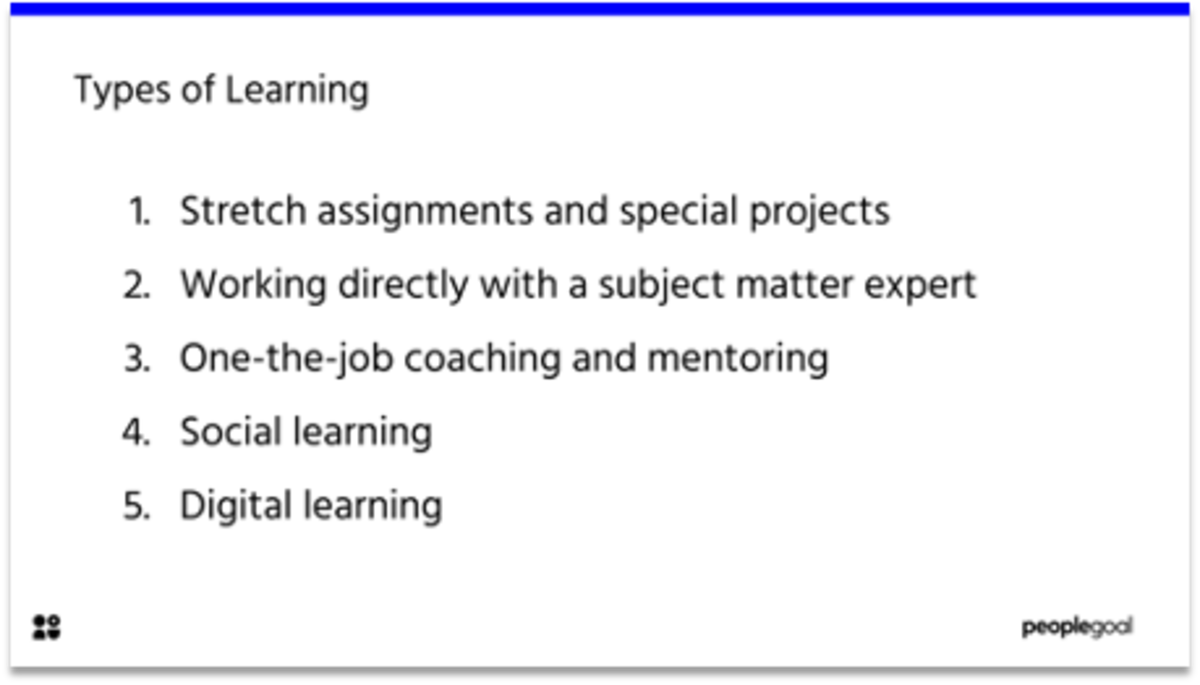
5. Create a plan for all contingencies
The fifth and final step to kicking off your learning and development plan must take into account all of what you have established in the previous steps and applying that to establishing a timeframe for your plan. For your plan to succeed, it is important to create a clear and easy-to-follow strategy. Set well-defined and attainable goals with determined deadlines.
Consider what needs to be done to allow your plan to be put into action. Any preparation that must be done before commencing the learning? Who will be involved? Where does the human resources department fit in? When can employees find the time to take on the learning? How will this have an impact on the general performance of the business? Additionally, ensure that employees understand what they’re going to learn and why the skills are beneficial for their careers and the company.
It is also important to explain how the employee will be able to apply their new skills in the workplace. The expense of learning and development must be justified by ensuring that these skills are put into practice. Setting deadlines and goals will enable you to measure how the training has impacted your business. This feedback can then enable you to reinforce and refine the employee’s formal training, whilst also informing you of the efficacy of learning and development strategies. After all, the purpose of learning objectives are to assist a business in fulfilling its long-term objectives.
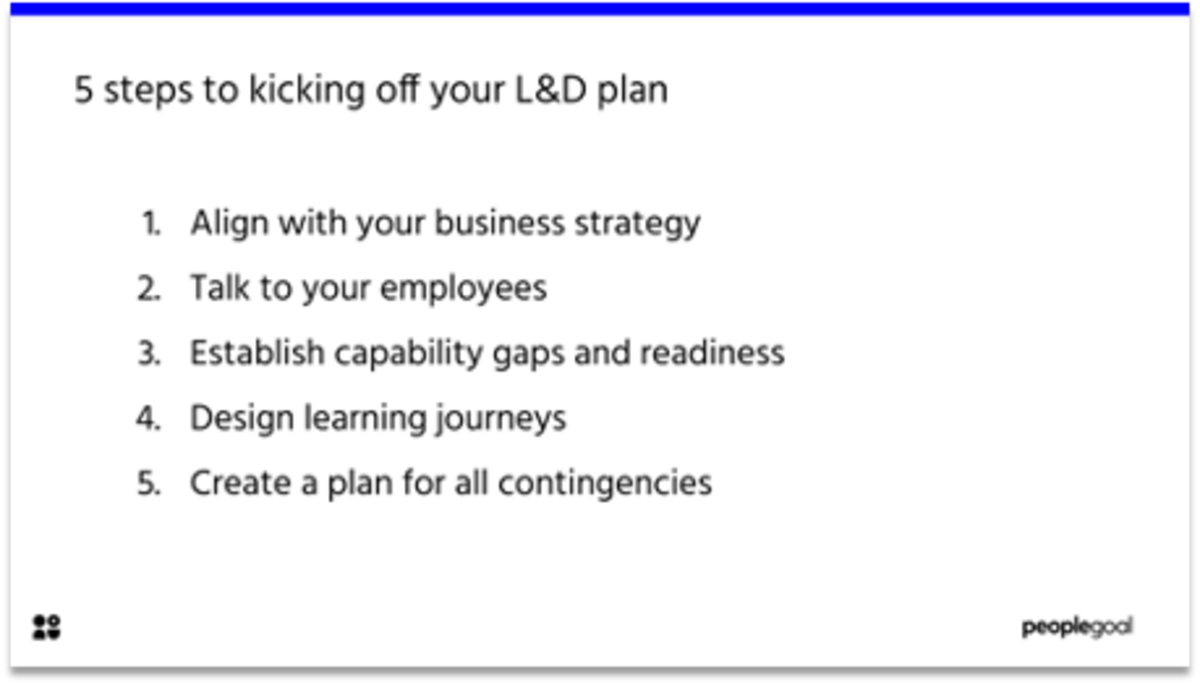
Ready to 3x Your Teams' Performance?
Use the best performance management software to align goals, track progress, and boost employee engagement.

